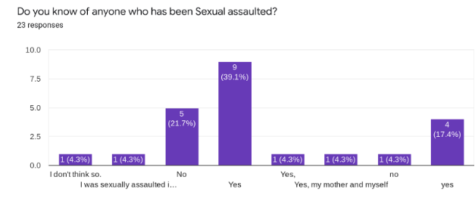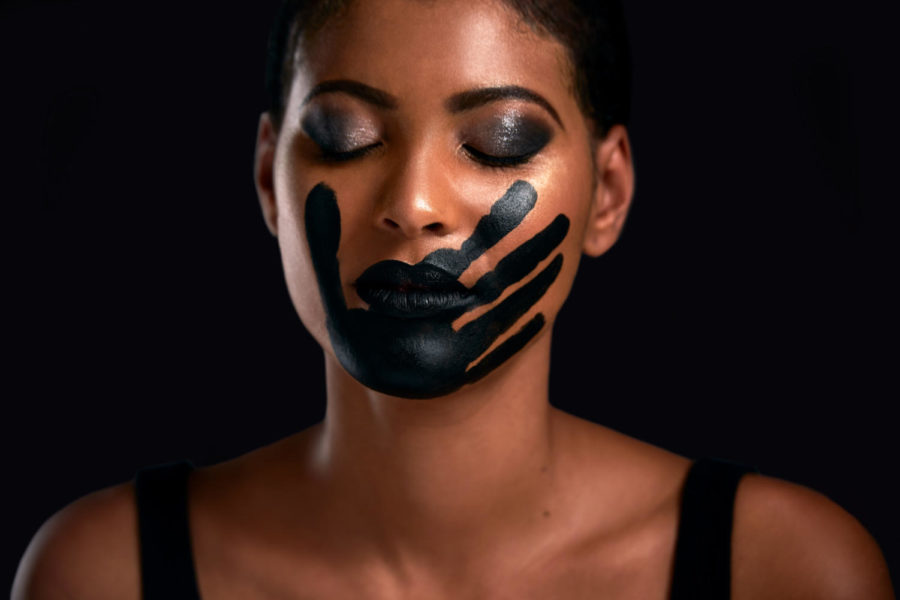The stigma around sexual sssault
Sexual assault damages the mind and soul of those involved. Photo courtesy of Getty Images
It’s an all too familiar story: A girl woke up dazed and confused not knowing why she felt the way she felt. She looked around, regaining full consciousness, realizing she was in a place she didn’t recognize. She could hear the faint sound of music coming from downstairs and she realized where she was. She heard a voice say, ¨Don’t be scared.¨ When she heard that, she started to tear up as she knew what was about to happen. The next day in one of her classes she couldn’t concentrate as the memories of what happened last night flooded her mind. Powerless, she couldn’t do anything or tell anyone. Well, she could, but she didn’t want to get embarrassed or victim-blamed. This is the story of 19 year old Lauren Allen, and as she describes it, “I was so enraged by the lack of action taken by my school to help me feel safer after this experience”. This begs the question: How do schools and media portray sexual violence and how is it a problem?
Sexual assault in school is not handled appropriately. For starters, victims are blamed and typically shamed. A prime example of this can be seen by simply watching the documentary Audrey and Daisy, which is available on Netflix. This documentary portrays how a young girl, Audrey, was told that it was her fault she was raped. People at school commented that she was ‘just too pretty’ or that she was ‘trying to be raped.’ Audrey unfortunately killed herself a few months after the attack. The documentary illuminates how the school did not take this problem seriously and didn’t take the time to help Audrey and give her the safe space she needed. Instead, they protected the people that raped her because they were star football players. In the media, it’s almost the same thing. The news hops on a case without knowing all the details, ultimately blaming the victims, which then spirals into misinformation. In movies and TV, SA (Sexual Assault) is almost always portrayed as the vic tim’s fault.
tim’s fault.
The graph seen above is from 23 peoples’ response to the question, “Do you know of anyone who has been sexually assaulted or been a victim of sexual violence?” Out of 23 people, 15 answered yes to this question in some form. That is a large number out of 23 people. But in a more general term, in the U.S. alone, one in every six women is a victim of sexual violence and every one in 33 men as well as women fall victim to sexual violence according to NYC PD analysis. The rate of cases reported is very high, although almost 40% of cases are false accusations so the numbers aren’t truly clear or concrete.
This may be a major societal problem but how can students fix it? Well, there is no way in which sexual violence can be fixed as high schoolers, but what some can do is find ways to help others who are affected by this. For starters, a lawyer named Lauren Lester who works on sexual assault cases said in order to help solve this problem, students need to first report anything witnessed. Lester also mentions that it is vital people don’t victim-blame students as that can be quite harmful.
Another thing one can do for themself, as Officer Brad Gagon mentions is to, “Learn what consent is before putting yourself in a bad situation”. As one can fall into victim-hood or become a perpetrator relatively quick. In today’s society it is also paramount that students know where their siblings are going so that they become aware of their situation and if they might need help. All wildcat students can do is try to limit what happens when people are not safe.
A good call to action as a high school student is to petition for protection classes and raise awareness about sexual violence. Students are constantly heading the forefront of change in the school system. Consequently, students might be society’s last hope in stamping out the silent suffering so many face in day to day life.



